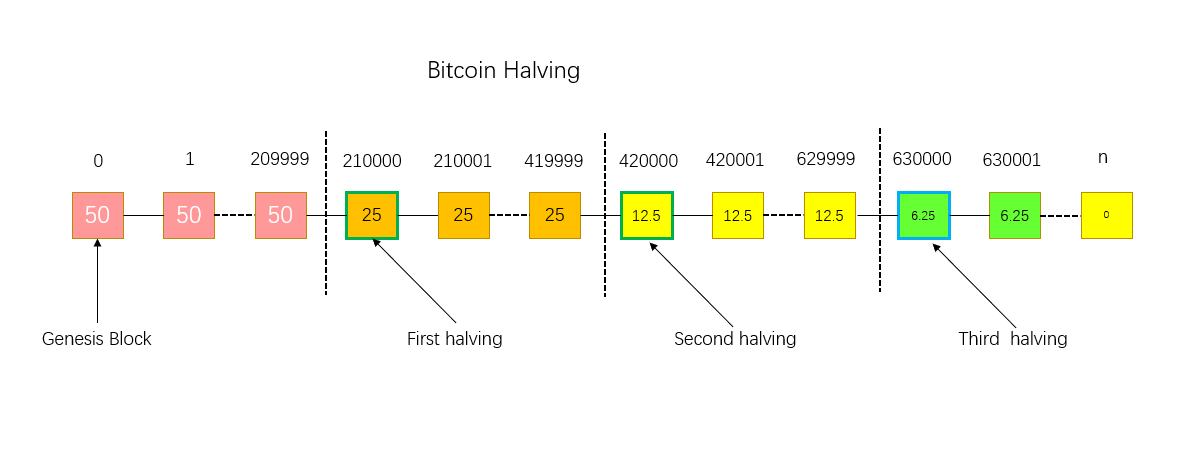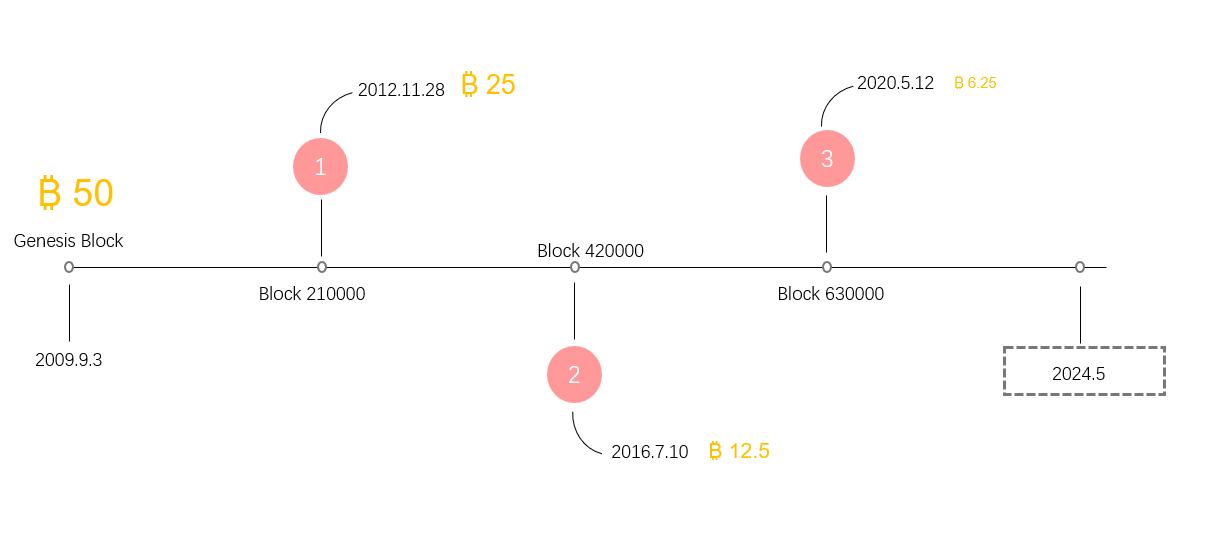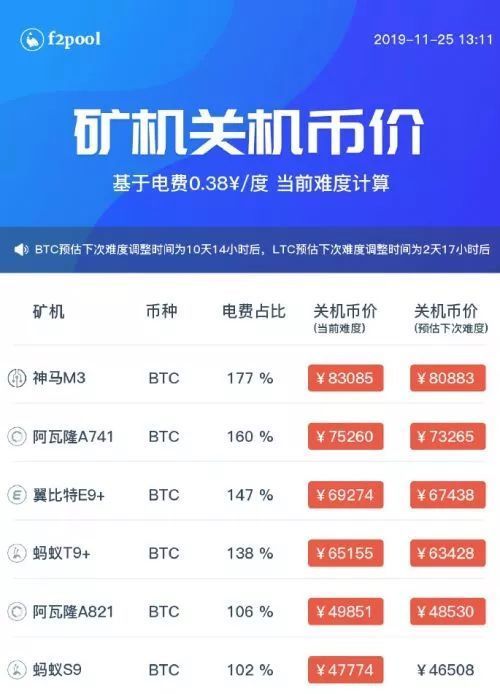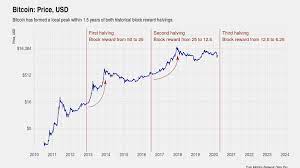What Is Halving?
In the crypto world, halving is a key component of the token issuance mechanism of the Bitcoin protocol. It refers to the process of reducing the rewards issued for mining a new block by half.
According to the explanation of halving in the Bitcoin White Paper, the total amount of Bitcoin that can be created is constant at 21 million, with the Genesis Block containing the first block reward of 50 BTC. After every 210,000 blocks are mined (approximately every 4 years as new Bitcoins are generated every 10 minutes), the mining reward halves.
To sum it up, a Bitcoin halving mainly involves the following two concepts:
1. Halving target: Halving aims to reduce the rewards issued for mining a new block by half.
2. Halving cycle: A Bitcoin halving occurs every 210,000 blocks mined or around every 4 years.

History of Bitcoin Halving
Bitcoin halvings have always been landmark events in the development of Bitcoin as a protocol. Since its launch, three Bitcoin halvings have taken place.
1. On Jan. 3, 2009, the Genesis Block was released, containing the first 50 Bitcoins.
2. On Nov. 28, 2012, the first Bitcoin halving took place when block 210000 was solved, reducing mining rewards to 25 BTC.
3. On Jul, 10, 2016, the second Bitcoin halving occurred when block 420000 was solved, reducing mining rewards to 12.5 BTC.
4. On May, 12, 2020, the third Bitcoin halving happened when block 630000 was solved, reducing mining rewards to 6.25 BTC.
Miners are currently rewarded 6.25 BTC for mining a new block.
It’s estimated that the last Bitcoin will be mined after the 64th halving occurs. This will take place sometime in 2140. After that there will be no more Bitcoins left to reward miners, meaning miners will rely on transaction fees as their mining rewards.

Halving Implications
From a macro level, Bitcoin halving is at the core of Bitcoin’s token issuance mechanism, serving as a key to distinguishing Bitcoin from fiat currencies.
Bitcoin halving ensures that new Bitcoins are issued in a cyclical and exponential descending order, so Bitcoin has deflationary characteristics, which is considered as one of the most acclaimed features of the cryptocurrency that significantly distinguishes it from a fiat currency. We all know that fiat currencies are centrally controlled and inflationary. Even after all the Bitcoins have been mined, according to Satoshi Nakamoto’s assumption, the underlying economic dynamics of Bitcoin can still sustain the stable operations of the Bitcoin network.
From a micro level, a mining reward cut due to Bitcoin halving is directly correlated to miners’ earnings. A Bitcoin supply decline will also have certain potential impacts on Bitcoin prices.
Halving and Its Effects
(1) On Miners
As many know, the biggest mining cost is electricity. With mining costs and Bitcoin prices unchanged, a Bitcoin halving directly cuts miners' earnings by half. Therefore, miners have to reduce their operating costs, which means they will face two options:
1) Turn off mining rigs: An earnings reduction forces some miners, especially small and medium-sized miners, to turn off their mining rigs due to rising difficulty in maintaining their high-cost operations. Due to the temporary pullout of these miners, the overall Bitcoin hash rate may be slightly reduced, negatively affecting the stability of the Bitcoin network. However, with the support of the Bitcoin mining difficulty algorithm (i.e., a reduction in hash rate is followed by a reduction in mining difficulty, which leads to the return of some miners), the effect is only temporary.

2) Upgrade mining rigs: Miners can increase their chance of mining a block by upgrading their mining rigs to enhance the computing power and efficiency. This means some miners must sell off their Bitcoins to cover the increased mining costs in upgrading and maintaining their mining rigs, which also results in post-halving selling pressure for Bitcoin.
(2) On prices
Based on the economic basics regarding the supply-demand relationship, if the current market demand for Bitcoin remains unchanged, but the supply of Bitcoin is halved, then its price will rise accordingly to maintain a market balance. Hence, it is widely understood that a Bitcoin halving increases the scarcity of Bitcoin, thus pushing up Bitcoin prices.
The historical data on Bitcoin halving also evidences the following conclusions. The data from the past three halvings shows there is usually a bull market a half year or a year after a halving takes place.

As discussed above, Bitcoin halving has a positive impact on boosting the price of Bitcoin. However, analysts noted according to Exponential Decay in mathematics, the impact of halvings on Bitcoin prices will be gradually reduced over time. Based on the Bitcoin halving theory, Bitcoin’s post-halving output rate will continue to reduce until the figure approaches 0. Specifically, compared with the data after the first halving, there was an output reduction of 2,625,000 Bitcoins after the second halving (210,000 blocks*25 BTC – 210,000*12.5 BTC) occurred. However, the figure narrowed to 1,312,500 after the third halving (210,000 blocks*12.5 BTC – 210,000*6.25 BTC) took place.
The next Bitcoin halving is expected to happen in May 2024, which will reduce the block reward to 3.125 BTC from the current level of 6.25 BTC.
With this new halving, it is still unknown whether Bitcoin prices will rally further as they always have before the approach of a halving or whether there will be a new factor to emerge that will alter the cycle.














